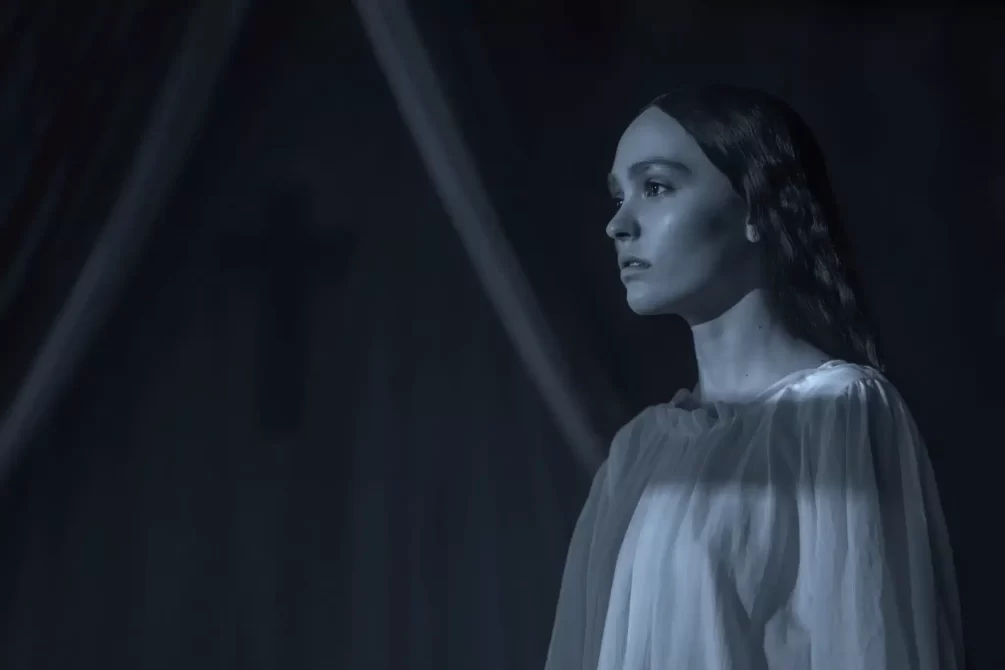
Vampires have been a big aspect of the horror movie genre for decades, but none of them matches the eerie nature of the original Nosferatu, which was directed by F.W. Murnau in 1922. The one-and-half-hour silent film featured Max Schreck as Count Orlok. More than a century later, director Robert Eggers is giving Nosferatu a chilling reboot, starring Bill Skarsgård, who played Pennywise in It, as the title character. Robert’s latest release promises to revive the raw terror that has been missing from vampire stories in modern times.
Bill Skarsgard’s Nosferatu, which debuted this Christmas holiday, has been met with widespread acclaim from both critics and viewers and currently boasts an 87% approval rating on Rotten Tomatoes based on about a hundred reviews. It is easily a significant comeback for contemporary horror cinema, as Collider’s Jeff Ewing tags it as 2024’s best horror movie.
What to look out for in the brand new vampire movie ‘Nosferatu’

Bill Skarsgård transformed into Count Orlok thanks to heavy prosthetics and a deepened voice. Supporting act Lily-Rose Depp plays Ellen, the wife of the movie’s protagonist, and she becomes the vampire’s obsession. This leads to his doom as Ellen distracts him by luring him into the sunrise, eventually destroying him. Aside from Bill Skarsgard’s Nosferatu being similar to the one from the ‘20s, Robert also employed the use of real rats for the movie for a more practical effect.

So far, those who have watched the latest Nosferatu have taken to social media to share their thoughts about the remake, as well as Bill Skarsgard’s portrayal of Nosferatu. “The light and color ppl did their biggest one on ‘Nosferatu,’ a film so dark, yet I could see everything, the kids actually are gonna be alright,” someone wrote on X— formerly Twitter, commending the visuals, while another called Robert an expert craftsman. “You can tell Robert Eggers really cares about this story and characters. I think everyone nails their performance and honestly, if I didn’t know that was Bill playing Orlok, I would’ve never guessed. Good time,” a second user gushed, while another looked forward to watching it again.

From ‘Nosferatu’ to Bram Stoker’s ‘Dracula’
Bram Stoker’s 1897 novel Dracula inspired 1922’s Nosferatu, although the names and details were modified, with Count Orlok looking like Count Dracula with his long fingers, sharp teeth, and eerie presence. While Nosferatu was not outrightly based on Dracula due to copyright issues, it set a precedent for the themes associated with the vampire movie genre. When Dracula was eventually made into a movie starring Bela Lugosi as the title character in the ‘30s, it arguably borrowed some visual and theatrical elements from Nosferatu. Robert himself admitted to being nervous about some scenes like the cemetery one and the part where Ellen and her husband have a lengthy confrontation towards the end.

Both stories see a vampire who preys on the living, specifically women, with Orlok targeting Ellen Hutter and Dracula, Mina Harker. They also leave Transylvania to pursue these women in Germany and England, respectively. While Nosferatu featured a more expressive visual style involving shadows and scary lighting to make up for the silence, Dracula focused on dialogue and interaction between the characters whilst maintaining the terrifying atmosphere. Although Nosferatu was a pioneer in the horror genre, it got banned in some locations, limiting its release, while Dracula achieved more critical and commercial success. Some critics have commended Egger’s Nosferatu for fixing the original’s show of women and Jews in bad light. “Nosferatu (1922) has a distasteful subtext about Jews bringing plague and pestilence, and thankfully, Eggers’ Nosferatu (2024) displaces this ugliness with subtext about how women are bringers of plague and pestilence,” a fan stated.
